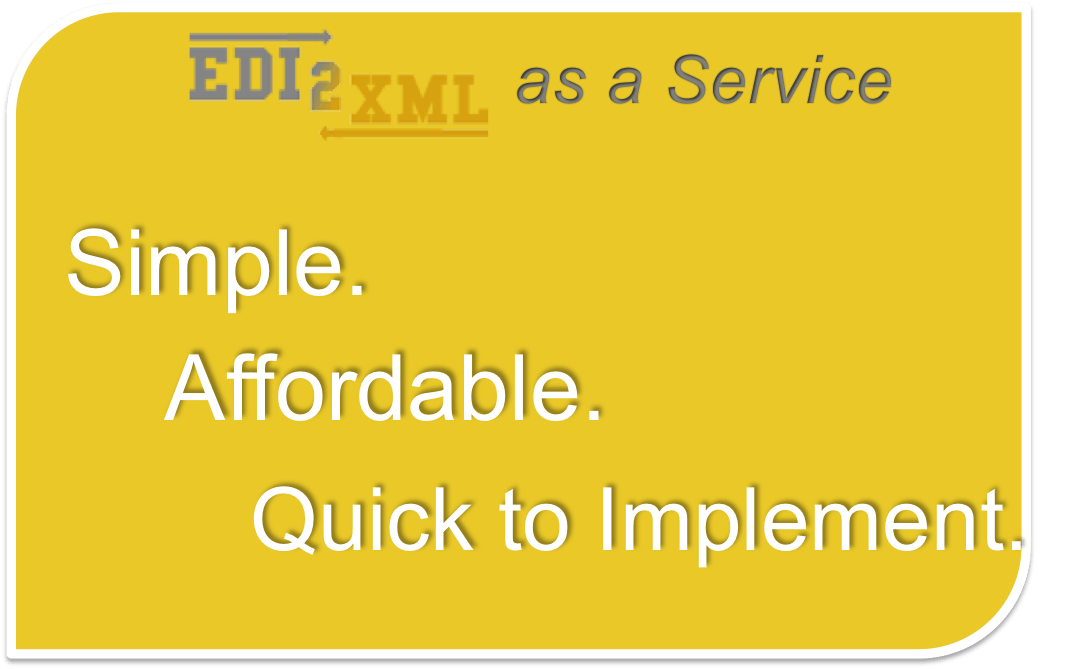How To Select An Integration Method That Works Best For Your eCommerce Platform
Last Updated on February 15, 2023 by Tatyana Vandich
This article was taken from our blog, published on our EDI2XML platform back in 2014.
 Do you have your own eCommerce Store, perhaps built with Shopify, or sell your goods online through Amazon, Cabela’s, eBay, etc.? If so, we are quite certain you’ve already been in discussion about how to best exchange data between you and your Trading Partner(s) or between your eCommerce platform and your internal software management system (i.e. your ERP system, CRM (Salesforce)…). In some cases, you may not have much of a choice, as some Trading Partners send their communication requirements prior to beginning a business relationship. For example, partners like Cabela’s or Amazon often push suppliers to be EDI compliant. At that point, it’s time to get in contact with an EDI provider to learn more about this process for your specific business needs.
Do you have your own eCommerce Store, perhaps built with Shopify, or sell your goods online through Amazon, Cabela’s, eBay, etc.? If so, we are quite certain you’ve already been in discussion about how to best exchange data between you and your Trading Partner(s) or between your eCommerce platform and your internal software management system (i.e. your ERP system, CRM (Salesforce)…). In some cases, you may not have much of a choice, as some Trading Partners send their communication requirements prior to beginning a business relationship. For example, partners like Cabela’s or Amazon often push suppliers to be EDI compliant. At that point, it’s time to get in contact with an EDI provider to learn more about this process for your specific business needs.
When it comes to integration between your eCommerce platform and your management system, this process will allow your two systems to interact seamlessly, without any need for human intervention. How it works is that you allow data from the eCommerce system to automatically be sent to your management system, as for example any new online orders, also allow your eCommerce system to receive data from your management system, for example, inventory statuses. This ensures your consumers are well aware of inventory on hand and their orders can be processed right away.
So, if you are unsure of what steps you should take, then I highly suggest you read through the following blog and then contact us to schedule a consultation with one of our experts. Every case is different and it’s best to go over your specific requirements and current capabilities with an integrations expert before making a decision. Of course, we highly recommend eCommerce integration as it improves efficiency, minimizes manual data entry and errors, increases order processing and allows for scalability.
What are some of the different integration methods?
- Electronic Data Interchange (EDI)
As experts of EDI, we’ve written quite a few articles on this topic. This protocol has been around for many years and is used to exchange data between business partners. The data being exchanged in “EDI format” is pre-defined in both format and structure. Trading partners can have their own file specifications. Files can be transmitted using several different types of secured communication protocols such as a VAN, AS2, FTP/sFTP, etc. This method is very popular in the manufacturing, retail, automotive, healthcare and pharmaceutical industries.
- XML
XML, or Extensible Markup Language, is a very common format, used to transfer well-structured data between business partners. It was designed to be self-descriptive allowing users to define their own XML tags to describe the data.
- Web Services
Web Services is a method of communication between 2 electronic devices over a network. It uses the Internet as a communication and transport protocol and the XML language to format the data transmitted back and forth.
So, which method is best for your eCommerce integration project? Well, that of course depends on your specific business needs. It’s important for companies to analyze their technical capabilities and ensure it aligns well with their business requirements;
- Does your internal IT team have any experience and expertise with any of the above integration methods? If so, which method are they more familiar with? If you don’t have an internal IT department, contact your IT provider and explain your business needs. They’ll suggest the best method for your specific case.
- List the technical advantages of using one method over the others.
- What are the costs for both of these options, for your specific case?
- What is the timeframe to get setup for these options, for your specific case?
- Are you already EDI-compliant due to requests from other Trading Partners? If so, EDI may be your best best.
If you’ve chosen EDI to be your integration method, then here is a list of questions to answer before speaking with an EDI consultant, so they’ll know exactly how best to help you;
- What system(s) do you currently use to manage your business operations? (if any)
- Do you use one fully integrated management system or multiple systems for various business functions? For example, Quickbooks for your Accounting, Hubspot for your CRM/Sales, etc.
- If you use multiple systems, are these systems integrated with one another? If not, are you manually inputting data in one system, then doing the same task in another system and so forth?
- What is your current workflow (at a business level)? If you can draw it that would be best!
- How many warehouses do you have? (if any)
- How many SKUs do you have, that will be used for EDI purposes?
- Are you currently shipping your goods to DCs (Distribution Centers) or doing Drop-Ship? (or both, depending on the retailer)
- Are you capable of extracting an accurate inventory status from your current inventory management system?
- If so, can this be automated to produce this status multiple times a day, if needed?
- Can you do pick/pack with your current inventory management system?
Jot down the answers to these questions, then contact us. We’ll be happy to help you with your eCommerce integration needs.











